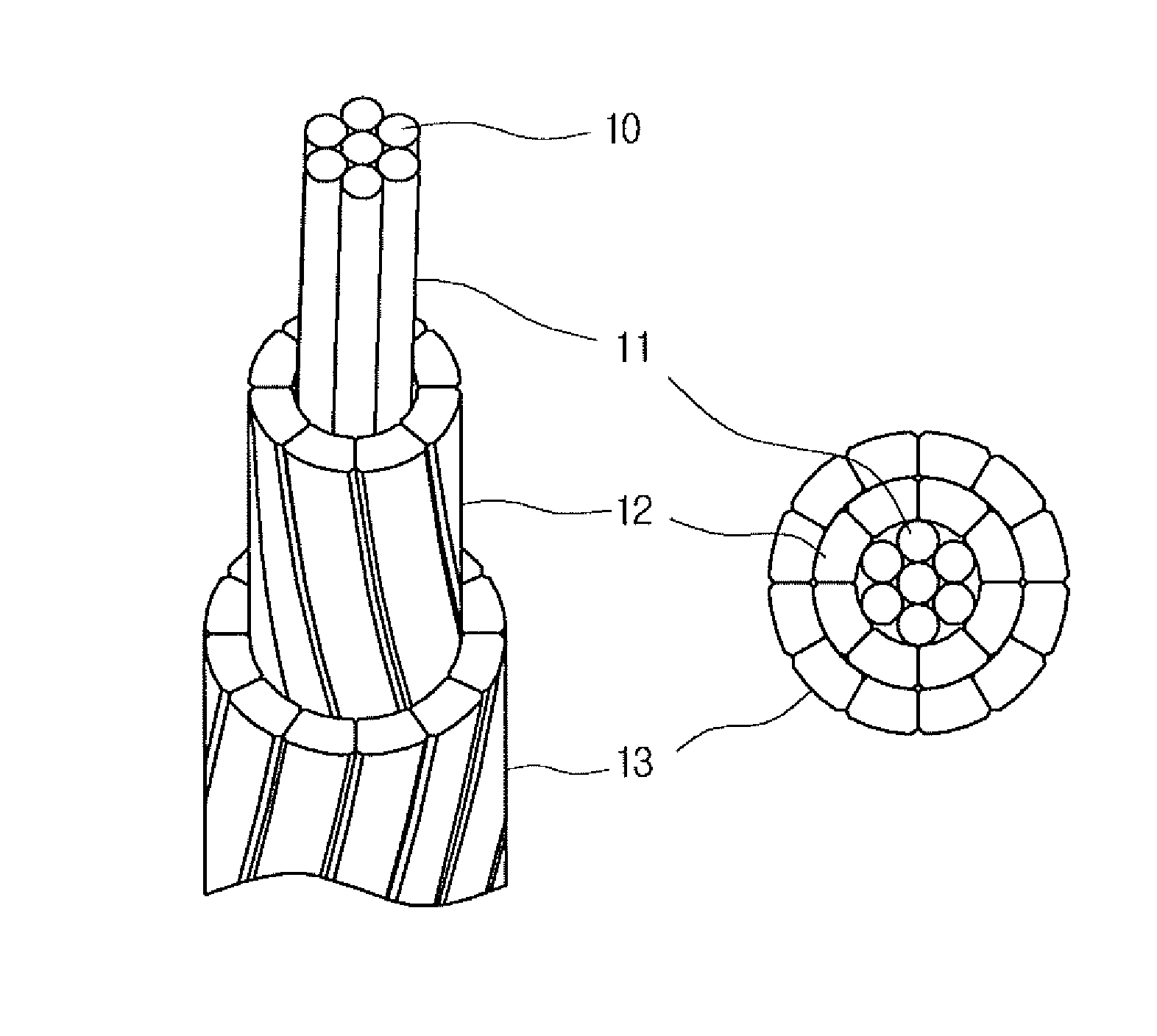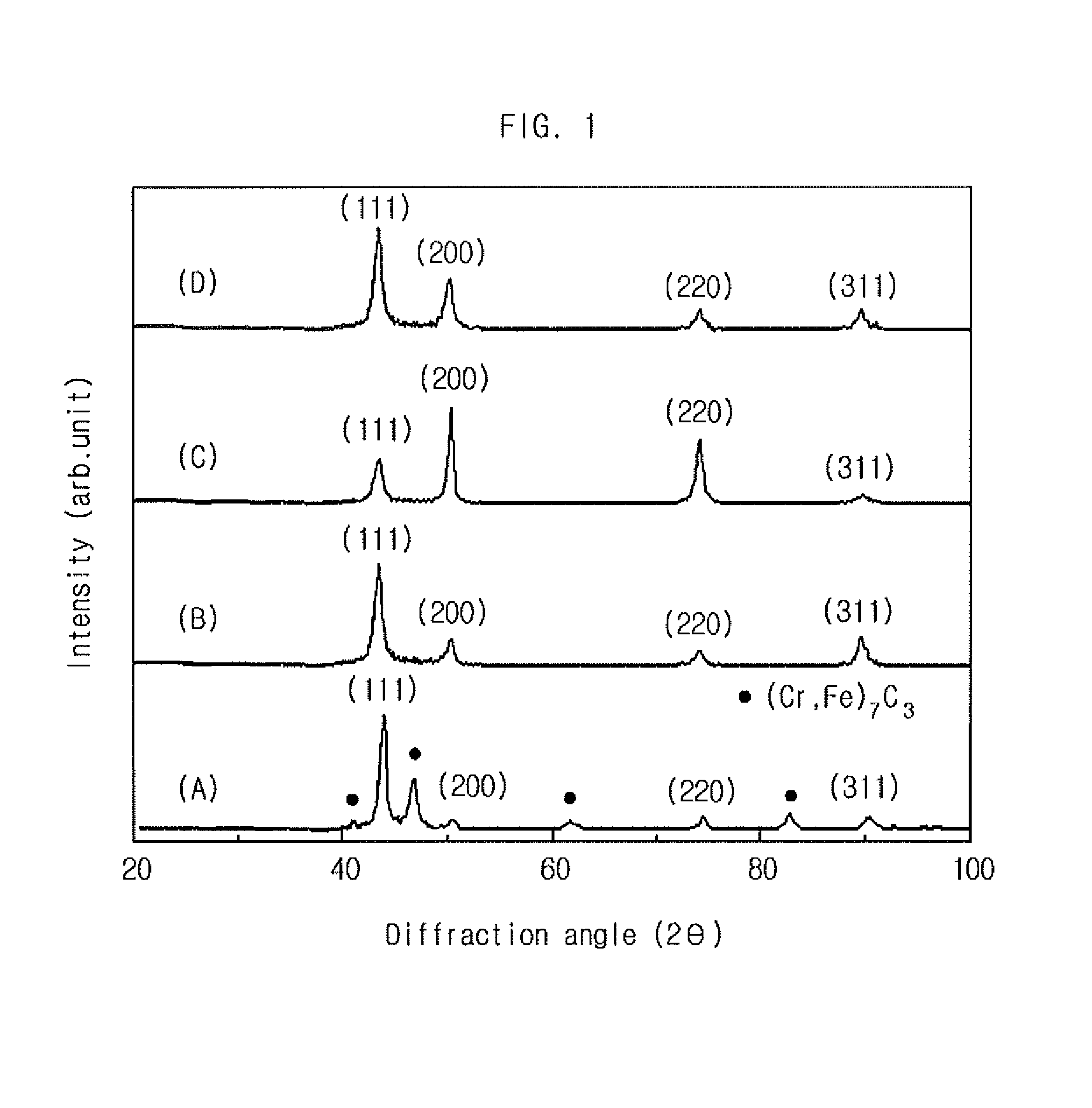Method for manufacturing high-nitrogen steel wire and overhead power line using same
a high-nitrogen steel wire and wire manufacturing technology, applied in the direction of cable/conductor manufacture, suspension arrangement of electric cables, solid-state diffusion coating, etc., can solve the problem of reducing transmission efficiency, increasing electric resistance loss in aluminum conductors, and affecting the performance of the transmission line. , to achieve the effect of improving alloy components, superb mechanical properties and non-magnetic properties, and improving the quality of the produ
- Summary
- Abstract
- Description
- Claims
- Application Information
AI Technical Summary
Benefits of technology
Problems solved by technology
Method used
Image
Examples
Embodiment Construction
[0036]Austenitic stainless steel has excellent corrosion resistance compared to ferrite stainless steel or martensitic stainless steel and has good mechanical properties at high and low temperatures. Moreover, austenitic stainless steel has good impact resistance and is easy for cold drawing, molding and welding. Furthermore, austenitic stainless steel has good creep strength at high temperatures and is tough at low temperatures.
[0037]The most important practical property of austenitic stainless steel is its non-magnetic property, which is a unique property that cannot be obtained from other stainless steels. Using this non-magnetic property, austenitic stainless steel is widely used as core parts materials of various electric / electronic devices.
[0038]Moreover, since austenitic stainless steel is quite processable, austenitic stainless steel can be processed to various wire rods as well as fine wires having double-digit urn of diameter and used as various filters.
[0039]However, alth...
PUM
| Property | Measurement | Unit |
|---|---|---|
| tensile strength | aaaaa | aaaaa |
| tensile strength | aaaaa | aaaaa |
| pressure | aaaaa | aaaaa |
Abstract
Description
Claims
Application Information
 Login to View More
Login to View More - R&D
- Intellectual Property
- Life Sciences
- Materials
- Tech Scout
- Unparalleled Data Quality
- Higher Quality Content
- 60% Fewer Hallucinations
Browse by: Latest US Patents, China's latest patents, Technical Efficacy Thesaurus, Application Domain, Technology Topic, Popular Technical Reports.
© 2025 PatSnap. All rights reserved.Legal|Privacy policy|Modern Slavery Act Transparency Statement|Sitemap|About US| Contact US: help@patsnap.com



